Banks secure countless personal, corporate and national assets, making them a target for crime. Despite the global economic downturn, security demand in the financial segment continues to grow.
Banks secure countless personal, corporate and national assets, making them a target for crime. Despite the global economic downturn, security demand in the financial segment continues to grow.
A bank robbery in Philippines resulted in 11 deaths. This tragic loss of life went
unrecorded, as the perpetrators forced security guards to turn off electronic security systems first. This massacre left no video evidence of the robbers, crucial for a court trial. Similar incidents like this take place all over the world, highlighting the dire need for reliable and comprehensive security solutions at banks.
With limited budgets and existing architectural constraints, banks seek high-level
security solutions that are cost-effective. Customized solutions give users more
options for different installations. Megapixel cameras are increasingly adopted, driving the migration to IP-based or hybrid surveillance solutions. Biometric identification, dual-technology detectors, metal detectors, safe solutions and ATM tracking sensors are receiving more attention. More solutions integrate the latest technology with communication to a central control station, effectively notifying security personnel and police in case of emergency.
However, uptake for IP-based technology and total solutions is slow, despite a great deal of hype. Existing analog equipment poses a challenge for the adoption of networked solutions, as most banks purchase solutions by product category rather than replacing all equipment. While banks are at the forefront of state-of-the-art rollouts, system integrators play an important role in accelerating the transition to new technology. The trend for pure IP solution is growing, although it is only seen in new branches for international banks.
Banks have other concerns beyond technology. Building design, locations of ATMs and thorough employee background checks also affect bank security. A complete solution requires careful planning and design, to keep valuables and people safe.
 While the financial industry bore the brunt of the market downturn, security demand continued to grow. The FBI found 6,062 reported bank robberies, burglaries and larcenies took place in 2009. Loot was aken 91 percent of the time, with losses worth US$45.9 million.
While the financial industry bore the brunt of the market downturn, security demand continued to grow. The FBI found 6,062 reported bank robberies, burglaries and larcenies took place in 2009. Loot was aken 91 percent of the time, with losses worth US$45.9 million.
“Growth for the security market slowed due to the global economic downturn, but the adoption of IP-based technology in banks increased in 2009 and 2010,” said Oh Tee Lee, Regional Director for South APAC, Axis Communications. “Bank security projects continue to grow on a worldwide scale. Currently, about 15 to 20 percent of banks are deploying IP-based technology.”
Threats
As banks are attractive targets for robberies, the traditional high-risk security areas in banks are locations affecting customer and employee safety. This includes entrances and exits, bank lobbies, teller lines, teller stations and ATMs, said Steve Langford, Director of Solutions Marketing, March Networks. Apart from public areas, safe vaults, cash counters and data centers are other sensitive areas. Having a risk analysis team can minimize the risk and threats for those locations, said Sri Hartati Kurniawan, CTO of RCG.
Increased ATM fraud can result in significant losses. "Banks are continuously challenged with securing ATM areas rom vagrants and ambushes, as well as during cash replenishment,” said Jim Fitzpatrick, Manager of Corporate Accounts, Financial, Global Security Products Group, UTC Fire & Security. “Increased surveillance and remote video monitoring provides banks with virtual escorts during ATM cash replenishment and live video of who is accessing the ATM during a transaction.”
challenged with securing ATM areas rom vagrants and ambushes, as well as during cash replenishment,” said Jim Fitzpatrick, Manager of Corporate Accounts, Financial, Global Security Products Group, UTC Fire & Security. “Increased surveillance and remote video monitoring provides banks with virtual escorts during ATM cash replenishment and live video of who is accessing the ATM during a transaction.”
ATM card skimming is another risk for banks. “Skimming is one of the most rapidly growing crimes in the financial industry today. We offer an antiskimming device that helps deter skimming activities by detecting the presence of a skimming device and alerting the monitoring center while the device works to prevent the skimmer from reading the card,” Fitzpatrick said.
 Solutions
Solutions
For physical security, the main objectives are to minimize the real risk prior or during an incident. Different solutions can be used throughout a bank.
At the door, entrance control systems screen patrons for weapons as they pass through an entry cabin. “If a weapon is detected, an audio and video interface allows branch personnel to conduct a simple assessment, and manually provide access, or turn away anyone who may pose a threat,” Fitzpatrick said.
Analytics can be used to ensure higher security. “Face detection analytics can be integrated with the access control system to help manage entry to all or only the remote facilities, ensuring a clear facial image is captured before anyone enters the premises,” Langford said.
After business hours break-inspose another threat . “Large screen moniters are becoming more prevalent in retail banking and are a target for thieves, so 24-hour monitoring can provide more complete protection than an individual security guard,” Fitzpatrick said. “In addition to central monitoring services, UTCFS offers remote video monitoring services for tighter security, reducing cost for guards or false alarm dispatches.”
Surveillance is crucial at banks and usually mandated. “A typical large bank would have about 3,000 to 4,000 cameras installed. For each branch, there would be at least four to eight cameras,” Lee said.“Megapixel cameras are increasingly used to reduce the number of cameras required.”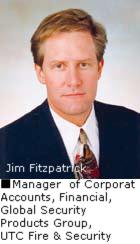
With surveillance monitoring needed 24/7, having powerful video search functions makes sifting through footage easier. “The ability to ‘tag' video for searching based on the activation of a ‘panic alarm' at a teller station, for example, also aids this process. Integration with access control systems also enables video to be tagged for each after-hours incident,” Langford said. “The use of encryption technology, tamper-proof seals on evidence and other features ensures the credibility of the video footage.”
Teller Counter
Bank tellers risk robbers threatening them at gunpoint, which is why bullet-proof glass was used as a proactive measure. Unfortunately, as more institutions have adopted this method, criminals have found ways to be more violent, threatening customers or bank staffs outside the protective cash area to demand cash.
Cameras are installed at the teller counters, facing the customers. “Personal attack buttons and kick bars are installed underneath the tables for sending emergency alarm signals to the central monitoring station or police in case of robbery,” said Vincentius Liong, Head of PEC, Building Management Systems and Security Systems, Schneider Electric.
 Clear surveillance images are needed to provide forensic evidence in case of a security breach. “Ever better video capture and compression technologies allow better quality video to be gathered and retained on incident,” said Langford. “This includes support of high-definition (HD) network cameras in strategic bank locations if desired, providing the ability to zoom in on the suspect in a very detailed fashion.”
Clear surveillance images are needed to provide forensic evidence in case of a security breach. “Ever better video capture and compression technologies allow better quality video to be gathered and retained on incident,” said Langford. “This includes support of high-definition (HD) network cameras in strategic bank locations if desired, providing the ability to zoom in on the suspect in a very detailed fashion.”
ATMs
Security measures for ATMs depend on where they are installed. I f ATMs a re ins t a l l ed in the bank's premises, the architectural design plays an important role in minimizing security risks. “If the ATMs are installed within the bank, the bank would have more control over the physical environment of the ATM, including the construction of the floor and walls, building alarms and video surveillance systems,” said Douglas Russell, Director, DFR Risk Management.
“In other locations, the owner of the ATM often needs to rely on the operator of the building, such as a retail mall, to implement the perimeter security,” Russell said. 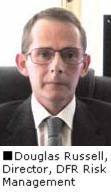 “Additional security features, such as higher-grade security enclosures, independent alarm systems and ATM-integrated cameras must be specified and added.”
“Additional security features, such as higher-grade security enclosures, independent alarm systems and ATM-integrated cameras must be specified and added.”
ATM surveillance is usually combined with manned patrols. “Most of the ATMs that are installed either inside or right outside the bank branch only have one camera inside the machine, with one security guard monitoring the premises,” said Raymond Koh, Regional Sales Manager for Southeast Asia, Axis Communications. “However, if the ATM machines are located in an isolated location, the banks would usually deploy two cameras — one monitoring the vicinity of the ATM and the other one monitoring the transaction.”
Analytics used at ATMs can detect loitering or card skimming. “When linked to the transaction system, it can also generate alarms if someone is at an ATM but is not conducting any transactions within a tested threshold,” Langford said.
Safes and Vaults
High-level security is required for access to safes and vaults. “We install heavy-duty magnetic contact, vibration and seismic detectors for safes and vaults,” Liong said. “Inside the vault room, we generally install sound detectors and dual-technology motion detectors, such as PIR and microwave detectors.”
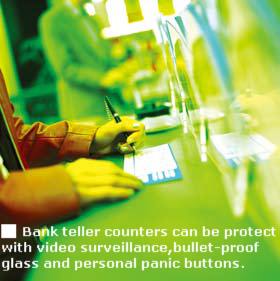 Integrated solutions helps banks manage safes efficiently and gives users peace of mind. “Heavy-duty magnetic contacts and vibration and seismic detectors are also armed and monitored centrally 24/7,” said Liong. “All systems are connected to the central monitoring station or the police.”
Integrated solutions helps banks manage safes efficiently and gives users peace of mind. “Heavy-duty magnetic contacts and vibration and seismic detectors are also armed and monitored centrally 24/7,” said Liong. “All systems are connected to the central monitoring station or the police.”
Vaults and safes should be easily configured for each site's layout. “Safe solutions that are flexible and easy to adapt to the site configuration make a cost-effective solution,” said Emmanuel Harir-Forouch, Product Line Manager for SafeStore Auto, Gunnebo. “Instead of being installed directly at the self-service terminal, lockers can also be installed above or below it, on a different floor. Savings can be made by placing the lockers in the cheaper office space, such as the cellar.”
Safe deposit boxes must be secure, yet accessible to customers. “The access for the terminal is at ground floor, tailored made to meet the needs and expectations of the banks,” Harir-Forouch said. “This solution also gives clients aroundthe- clock access to their locker contents resulting in a better, much more convenient service.”
Cash Replenishment
Each bank has different security requirements for cash-in-transit solutions. Transporting truckloads of cash means there is a high risk of attack. “A fully armored vehicle includes ballistic composite and steel exterior armor, an automatic sound-locking system for driver and passenger doors, GPS and video surveillance to track vehicle location and interior condition, and an installed safe in each vehicle that cannot be opened until it has returned to the depot,” Fitzpatrick said.
The security staff must be trained thoroughly. “In Hong Kong, UTCFS provides cash-in-transit service through our Guardforce brand,” said Fitzpatrick. “Our guards minimize risk by enforcing key guidelines throughout the business, some of which include armed cash-in-transit teams, fully armored vehicles and strict adherence to the pavement limit. Each cash-in-transit team must include at least one armed guard.”
Installing all the ne cessary equipment to battle outside attack does not guarantee complete security. Security procedures must take place to reduce internal threats. This is most effectively solved by conducting background checks. They can be done in-house or through an outside source for all personnel hired at banks.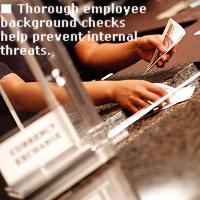
Integration
While integrated solutions are a hot topic, they are unusual at banks. “The expression of ‘total solution' is widely used but rarely actually delivered or implemented,” said Russell.
Issues with existing technology hinder the uptake of total solutions. “Legacy infrastructure often restricts banks from fully integrating a suite of solutions that cover a large number of different threats. Banks, like many other large businesses, often prefer to only have to manage a small number of suppliers,” Russell said. “We help our clients in such situations by working closely with the clients' existing suppliers and encouraging them to source critical components from third-party vendors when appropriate.”
This way, the banks do not need to increase their suppliers, but benefit from the components best suited to protect their assets, Russell said.
The market for total solutions has increased, due to large international banks. “Prime and large international banks are increasingly looking for fully integrated solutions from one vendor or system integrator. In rare cases, they select systems from multiple vendors or system integrators, because a one stop shop provides them peace of mind with a total solution,” Liong said. “Well-known brands and system integrators are preferred, and after-sales service is highly needed and valued.”
Banks in the Middle East and China prefer integrated singlevendor solutions to reduce the complexity of buying products from different vendors, Kurniawan said.
At banks that combine solutions from multiple vendors, their system integrator must be able to smoothly integrate new solutions with existing equipment.
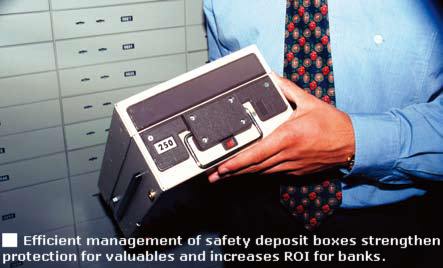 Beyond Equipment
Beyond Equipment
Technology enhances security at banks, but deploying it is not the only solution. “We generally propose comprehensive security solutions to banks, which will include the latest integrated security technologies, central monitoring station, security guard patrols and a quick response team,” Liong said. “All of these are managed and operated based on specifically customized SOP to meet the bank's unique requirements.”
No matter what defenses are implemented, there will always be risk. “Criminals are constantly modifying their techniques and updating their tools to improve their chances of success. Often criminals will learn from successful attacks in other countries and cause crime echniques to migrate across geographies,” Russell said. “Therefore, reviewing security needs to be an ongoing process rather than a simple one-time exercise.”
There are several approaches to strengthening their security measures. “The first is to carry out a yearly detailed and objective assessment to ensure that the security measures currently in place are still fit for purpose and have been properly maintained,” Russell said.
“The second is to have a response plan in place so that when intelligence reports highlight new threats it triggers a review of the likely impact to the client's estate. The last is at every new purchasing cycle, the specification is validated as being still valid given the latest criminal attack methods identified globally.”